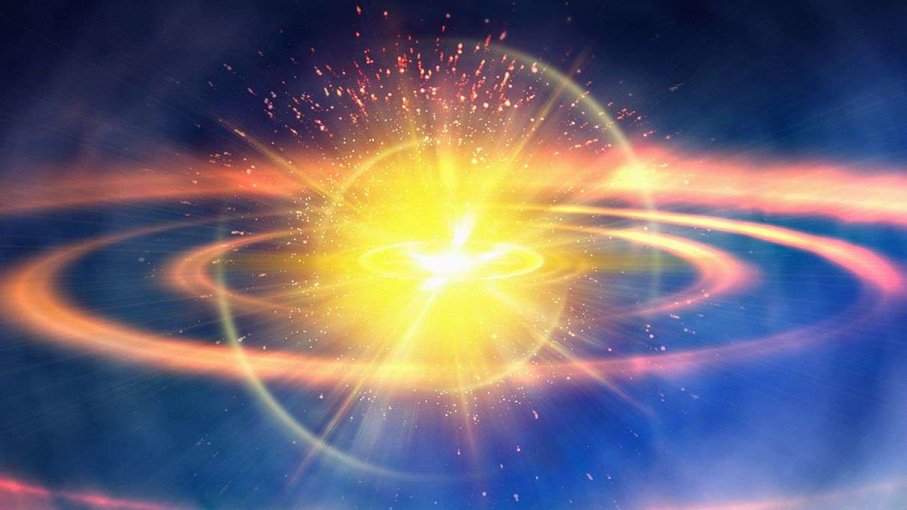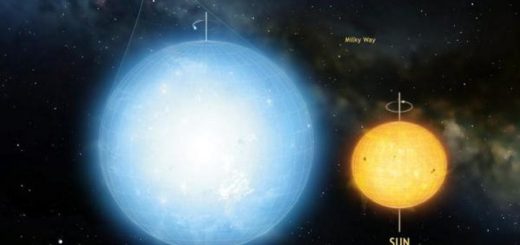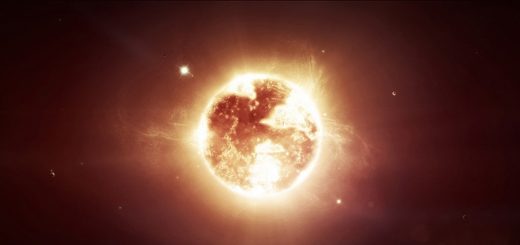Dead Galaxies Indebted to Dark Matter

Seven to 10 billion years ago, a bunch of galaxies fell in with a bad crowd at the Coma cluster — a galactic group comprising thousands of their ilk. That crash “quenched” the ill-fated galaxies. They’d never again burn with hot, young stars.
But the crash should have done more than shut down the unfortunate galaxies’ stellar birth rate. It should have strewn their stars across space.
So what kept these cosmic corpses intact? According to a simulation-based study in the July 20 issue of Monthly Notices of the Royal Astronomical Society (MNRAS), they owe their survival to the fact that they contain 100 times more dark matter than visible matter.
Dark matter is an unseen substance that does not, as CERN explains, absorb, reflect or emit electromagnetic radiation such as light. Scientists infer its presence by noting how its gravity affects the visible universe. The amount of dark matter varies over space and time, but averaged across the universe it currently outpaces visible matter by a factor of five.
In galaxies, which form in giant clumps of dark matter called halos, ratios can range from 10 to 1,000, according to Cameron Yozin, a Ph.D. student at the University of Western Australia and co-author of the MNRAS paper.
“The masses of these dark halos varied from small to large, and so the galaxies that formed within them also vary in such a manner,” Yozin explains in an email interview.
The high ratio in the Coma cluster galaxies, located about 300 million light-years from Earth, suggests that they were massive enough to rival our own Milky Way but went dormant before they had the chance.
“Accordingly, these galaxies’ stellar discs are spatially as large as the Milky Way, but have 100 times fewer stars, leading to an exceptionally large dark-to-visible-matter ratio,” explains Yozin.
Galaxies die when they become unable to give birth to young stars. This lends them a certain spectral quality — as in spectrum — that sets them apart when viewed through certain filters. Because they are full of old, dimming stars instead of bright, young, bluish ones, their emission profile skews red. Hence, astronomers call them “red and dead.”
“There is also a smaller, third category for galaxies, the so-called ‘green valley,’ which appears to comprise galaxies undergoing a transition from blue to red,” adds Yozin.
A number of factors can cause this quenching, but generally something goes haywire with the cold gas required for star formation.
Sometimes the gas is simply gone. The Coma cluster provides a dramatic example. As galaxies fell into it, the cluster’s hot gases expelled the infalling galaxies’ stellar fuel like dust before a sirocco.
But a galactic mosh pit is not required for death to occur. Individual meetups can prove just as deadly, ironically enough, by sparking off a short-term baby boom. Astronomers have caught the aftermath of such a rendezvous in the galaxy NGC 3801, and the results are spectacular. The ensuing shake-up sends shockwaves rippling through colliding gas clouds, driving them to build massive new hot suns. These live-fast, die-young, leave-an-explosive-corpse stars soon supernova, blasting away remaining gas clouds and dust, shutting down star production.
In other instances, dead galaxies contain plenty of gas, but some factor prevents them from forming stellar nurseries. The likely culprit? The supermassive black holes occupying galactic cores. Material flowing toward (or falling into) black holes puts off energy, heating and agitating surrounding gases. Like over-stirred Jell-O left on the stove, they never “set” into stellar embryos.
Supermassive black holes also play a role in the death of colliding galaxies. They devour whatever gases survive the supernova blowout, and in the process emit high-speed plasma jets that blast away remaining gases.
These are recent discoveries, made possible in the past two decades by improved ground and space-based instruments such as NASA’s Chandra X-ray Observatory and Galaxy Evolution Explorer, and the European Space Agency’s Herschel Space Observatory.
Not long ago, astronomers viewed galaxies as standalone structures that followed a straightforward life cycle from star-spawning youth to gas-poor old age and rarely collided. We now know that galaxies began dying fairly early in the history of the universe, and that central supermassive black holes and galactic collisions play key roles in galactic evolution.
But many questions remain. What is dark matter? And if, as current models suggest, the universe should be teeming with very small halos of it, then where are all the tiny galaxies?
“For example, the Milky Way should be surrounded by hundreds of small, invisible dark matter halos, but we have so far only detected less than 50 galaxies,” says Yozin.
“Either there are not as many dark halos as our theory predicts, or star formation is hugely inefficient or easily suppressed within very low mass halos.”
NOW THAT’S COOL
Some galaxies are more like zombies — they have young stars but can’t make more (they’re already dead — they just don’t know it). Our nearest neighbor, Andromeda, might be one of them.



 Creators of mankind
Creators of mankind Description of “Tall white aliens”
Description of “Tall white aliens” Where they came from?
Where they came from? About hostile civilizations
About hostile civilizations The war for the Earth
The war for the Earth “Tall white aliens” about eternal life
“Tall white aliens” about eternal life Video: “Nordic aliens”
Video: “Nordic aliens” Aliens
Aliens Alien encounters
Alien encounters The aliens base
The aliens base UFO
UFO Technology UFO
Technology UFO Underground civilization
Underground civilization Ancient alien artifacts
Ancient alien artifacts Military and UFO
Military and UFO Mysteries and hypotheses
Mysteries and hypotheses Scientific facts
Scientific facts


















